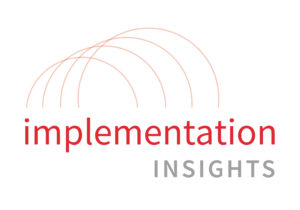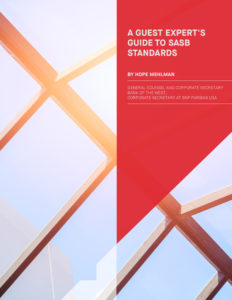DS Smith is a leading supplier of sustainable packaging solutions, paper products and recycling services worldwide. Its story can be traced back to the box-making business started by the Smith Family in East London in the 1940s. Today, it is a large, global company listed on the London Stock Exchange.
True to its Purpose, “Redefining Packaging for a Changing World”, DS Smith is championing the transition to the circular economy with a circular business model that involves collecting used paper that is turned into recycled packaging and then collected to start the loop again.
DS Smith Sustainability Report 2021 provides a progress update on the Now and Next sustainability strategy, which is focused on closing the loop through better design, protecting natural resources by making the most of every fibre, reducing waste and pollution through circular solutions and equipping people to lead the transition to a circular economy.
We spoke to Hugo Fisher, Investor Relations Director; Wouter van Tol, Head of Sustainability, Government and Community Affairs and Oliver Bradley, Sustainability Reporting Manager about how SASB reporting helps communicate DS Smith’s unique circular economy story to investors.
How does ESG connect with long term financial performance for DS Smith?
Hugo: The circular economy sits at the heart of our business. Investors see ESG as integral to a company likely to deliver good financial returns, as well as value for customers, employees and the wider environment in which we operate. For us, sustainability is a commercial opportunity and growth driver, as we help our customers to participate in the circular economy.
Why did you decide to use SASB Standards to communicate ESG to investors?
Hugo: Interest in ESG has accelerated, particularly during the past 18 months and we are engaging with investors on these topics more widely, more than ever, as their expectations grow. As we aim to take a leadership position in the conversation, it is essential that we communicate our value proposition to investors effectively. SASB’s industry-specific standards help to communicate the connection between ESG issues and enterprise value creation.
How has the standard helped communicate ESG in the sustainability report?
Wouter: As the pace of change in the world accelerates, stakeholders are demanding more from corporate reporting across a breadth of ESG issues. We can demonstrate strong management of ESG through good disclosure that is core to our business model within the Containers & Packaging standard, such as indicators including percentage of raw materials from recyclable/renewable sources and revenue from products that are reusable and/or recyclable. Given that, as part of Now and Next, we aim to manufacture 100% reusable or recyclable packaging by 2023 and demonstrate the benefits of circular business models, this disclosure is crucial.
Has the standard helped manage, as well as communicate, sustainability performance?
Wouter: We reviewed the standard as an input to our materiality assessment for Now and Next and as a tool to align definitions between business units for internal reporting. A number of metrics in the standard, for topics such as greenhouse gas emissions, energy management and water management have informed internal projects such as emission reduction roadmaps, climate scenario analysis and water stress mitigation plans to aid decision making, planning and ultimately stronger management inline with TCFD. Also, we are improving our ESG ratings performance and we believe that strong disclosure is a key driver of this.
What advice do you have for companies that are beginning the process of integrating SASB standards into their management and disclosure processes?
Oliver: It is better to get started than let perfection be the enemy of progress. Investors realise that ESG disclosure is a journey and some disclosure is preferable to no disclosure. It is likely that a company with a mature approach to reporting already has a lot of the data required to report to the standard. For companies looking to improve the quality of their reporting, the SASB standards provide an accessible starting point within a well-defined and credible industry-specific focus. When we disclosed for the first time last year, given that we already had a lot of the data within our internal reporting systems, the standard helped to fine-tune data quality, rigour and then disclose in a systematic framework within our report. It helped identify gaps in our reporting and then enhance our disclosure by filling in the missing pieces.
How does SASB complement your use of the GRI standard in the sustainability report?
Oliver: Both SASB and GRI (Global Reporting Initiative) have their place in our sustainability report. Whilst the GRI standards help us to understand and disclose impacts in a way that meets the needs of stakeholders broadly, the industry-specific nature and financial materiality focus of SASB helps us to communicate key accounting metrics aimed at investors and ESG ratings agencies. These audiences are important for us, as a FTSE 100-listed company. We believe that through good disclosure, we can maximise the recognition of our performance by these agencies.
What are the benefits of being a member of the SASB Standards Advisory Group?
Oliver: The Standards Advisory Group (SAG) is a part of SASB’s standard-setting process. Our involvement is an opportunity to discuss the implementation and use of the standards with SASB experts and other reporters, as well as help shape the future of the standards to benefit the packaging industry. This is important, because the sustainability reporting ecosystem is ripe for clarity, simplicity and uniformity, helping businesses and investors develop a mutual understanding of sustainable enterprise value.
What are your goals to further evolve your ESG/sustainability reporting at DS Smith?
Oliver: It is essential that we keep ahead of reporting developments, including regulatory momentum, in what is a rapidly evolving discipline. We must take advantage of innovations that improve how we communicate our sustainable value creation story, as well as ESG risks, opportunities and performance. This isn’t only in the reports we publish – but also across other mediums, including how ESG agencies position us to their clients, how our disclosure is utilised by third parties in their own research and ultimately how well our messages land with these secondary audiences. It is crucial that we tell a compelling story to investors about how we are accelerating the transition to the circular economy, supported by robust disclosure.

